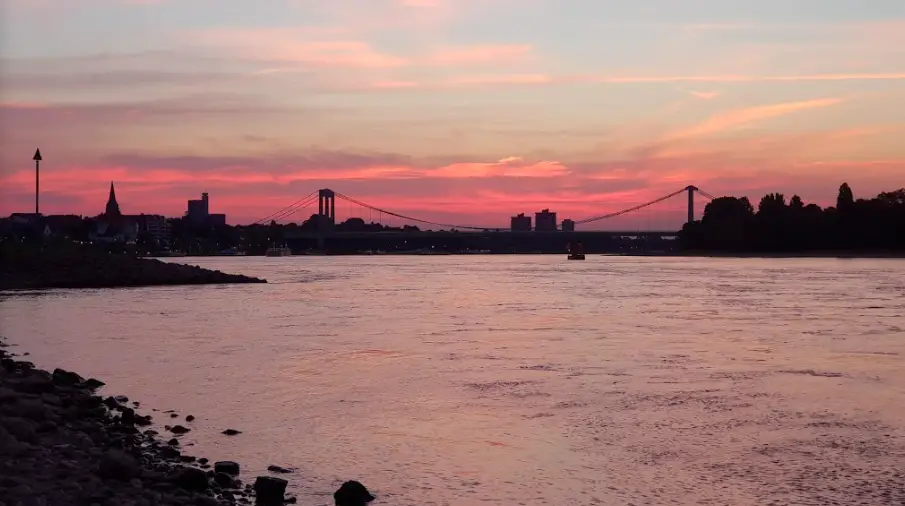How can I explore Germany's unique cave formations?
Post ByAdequate Travel
Summary
If you’re looking for an exciting way to explore Germany’s beautiful countryside, then the unique cave formations in the region offer an amazing opportunity. From the famed Siegmoning Cave to the hidden Schlossberg Caves, this guide will help you discover some of the most breathtaking cave systems in the country.
Before embarking on your journey to germany, make sure to check the latest travel guidelines and entry requirements to ensure a smooth trip
Exploring Germany's unique cave formations can be an exciting and adventurous experience. Here's a detailed guide on how to do it:1. Research and choose the caves: Germany is home to numerous caves, each with its own distinctive features. Begin by researching the different regions known for cave formations, such as the Swabian Jura, Franconian Switzerland, Harz Mountains, and Bavarian Alps. Look for caves that offer guided tours or are open to public exploration.Example: The Swabian Jura region in southern Germany is famous for its impressive limestone caves, including the UNESCO World Heritage site of the Swabian Jura Caves. These caves feature stunning stalactite and stalagmite formations, and some contain Ice Age artifacts.2. Plan your visit: Once you have chosen the caves you want to explore, plan your visit accordingly. Check the opening hours, admission fees, and any specific regulations or requirements for each cave. It's important to note that some caves may have limited access or require advanced booking for guided tours.Example: The Hermannshöhle Cave in the Harz Mountains requires prior reservations for guided tours, while the Bärenhöhle in the Swabian Jura is open for self-guided tours during specific seasons.3. Get proper equipment and clothing: Exploring caves often involves traversing uneven terrain, narrow passages, and sometimes climbing. It is crucial to have the right equipment and clothing for your safety and comfort. This may include a helmet, flashlight or headlamp, sturdy footwear with good traction, and protective clothing.Example: Wear comfortable hiking shoes with non-slip soles and bring a headlamp or flashlight to navigate the caves. Consider dressing in layers, as the temperature inside caves can be cooler than outside.4. Follow safety guidelines: Cave exploration can be challenging, and it is important to prioritize safety. Always follow the guidelines provided by the cave management or tour guides. Respect any restricted zones, stay on designated paths, and never touch or remove any formations inside the caves.Example: The Frankische Schweiz Geotop Park, located in Franconian Switzerland, offers guided tours to various caves while emphasizing strict safety guidelines to protect the delicate speleothems.5. Guided tours: Opting for guided tours is an excellent way to explore Germany's caves while learning about their geological and historical significance. Guides can provide interesting insights, help ensure your safety, and make sure you don't miss out on any highlights. It's advisable to book guided tours in advance, especially during peak seasons.Example: The Bavarian Alps have several caves, such as the Partnach Gorge and the Riesending Cave, where specialized guides offer thrilling tours showcasing the unique cave formations and their natural features.6. Capture the experience: Don't forget to bring your camera or smartphone to capture the beauty of the cave formations and document your adventure. However, ensure that photography is allowed in the specific cave you are visiting.Example: The Saalfeld Fairy Grottoes in Thuringia allow photography, enabling visitors to capture the stunning colorful formations, underground lakes, and unique light shows.Remember to always practice responsible tourism by leaving no trace, respecting the environment, and following any specific rules outlined by the cave management or tour guides.
Exploring Germany's unique cave formations can be an exciting and adventurous experience. Here's a detailed guide on how to do it:1. Research and choose the caves: Germany is home to numerous caves, each with its own distinctive features. Begin by researching the different regions known for cave formations, such as the Swabian Jura, Franconian Switzerland, Harz Mountains, and Bavarian Alps. Look for caves that offer guided tours or are open to public exploration.Example: The Swabian Jura region in southern Germany is famous for its impressive limestone caves, including the UNESCO World Heritage site of the Swabian Jura Caves. These caves feature stunning stalactite and stalagmite formations, and some contain Ice Age artifacts.2. Plan your visit: Once you have chosen the caves you want to explore, plan your visit accordingly. Check the opening hours, admission fees, and any specific regulations or requirements for each cave. It's important to note that some caves may have limited access or require advanced booking for guided tours.Example: The Hermannshöhle Cave in the Harz Mountains requires prior reservations for guided tours, while the Bärenhöhle in the Swabian Jura is open for self-guided tours during specific seasons.3. Get proper equipment and clothing: Exploring caves often involves traversing uneven terrain, narrow passages, and sometimes climbing. It is crucial to have the right equipment and clothing for your safety and comfort. This may include a helmet, flashlight or headlamp, sturdy footwear with good traction, and protective clothing.Example: Wear comfortable hiking shoes with non-slip soles and bring a headlamp or flashlight to navigate the caves. Consider dressing in layers, as the temperature inside caves can be cooler than outside.4. Follow safety guidelines: Cave exploration can be challenging, and it is important to prioritize safety. Always follow the guidelines provided by the cave management or tour guides. Respect any restricted zones, stay on designated paths, and never touch or remove any formations inside the caves.Example: The Frankische Schweiz Geotop Park, located in Franconian Switzerland, offers guided tours to various caves while emphasizing strict safety guidelines to protect the delicate speleothems.5. Guided tours: Opting for guided tours is an excellent way to explore Germany's caves while learning about their geological and historical significance. Guides can provide interesting insights, help ensure your safety, and make sure you don't miss out on any highlights. It's advisable to book guided tours in advance, especially during peak seasons.Example: The Bavarian Alps have several caves, such as the Partnach Gorge and the Riesending Cave, where specialized guides offer thrilling tours showcasing the unique cave formations and their natural features.6. Capture the experience: Don't forget to bring your camera or smartphone to capture the beauty of the cave formations and document your adventure. However, ensure that photography is allowed in the specific cave you are visiting.Example: The Saalfeld Fairy Grottoes in Thuringia allow photography, enabling visitors to capture the stunning colorful formations, underground lakes, and unique light shows.Remember to always practice responsible tourism by leaving no trace, respecting the environment, and following any specific rules outlined by the cave management or tour guides.
Suggested Questions
- Ruine Heisterbach, Königswinter: Horror Story, History & Paranomial Activities
- Bürgerspital, Würzburg: Horror Story, History & Paranomial Activities
- Bergkirchweih, Erlangen: Horror Story, History & Paranomial Activities
- Hotel Vier Jahreszeiten Kempinski, Munich: Horror Story, History & Paranomial Activities
- Hotel Elephant, Hildesheim: Horror Story, History & Paranomial Activities
- Landgasthof Adler, Oberwolfach: Horror Story, History & Paranomial Activities











